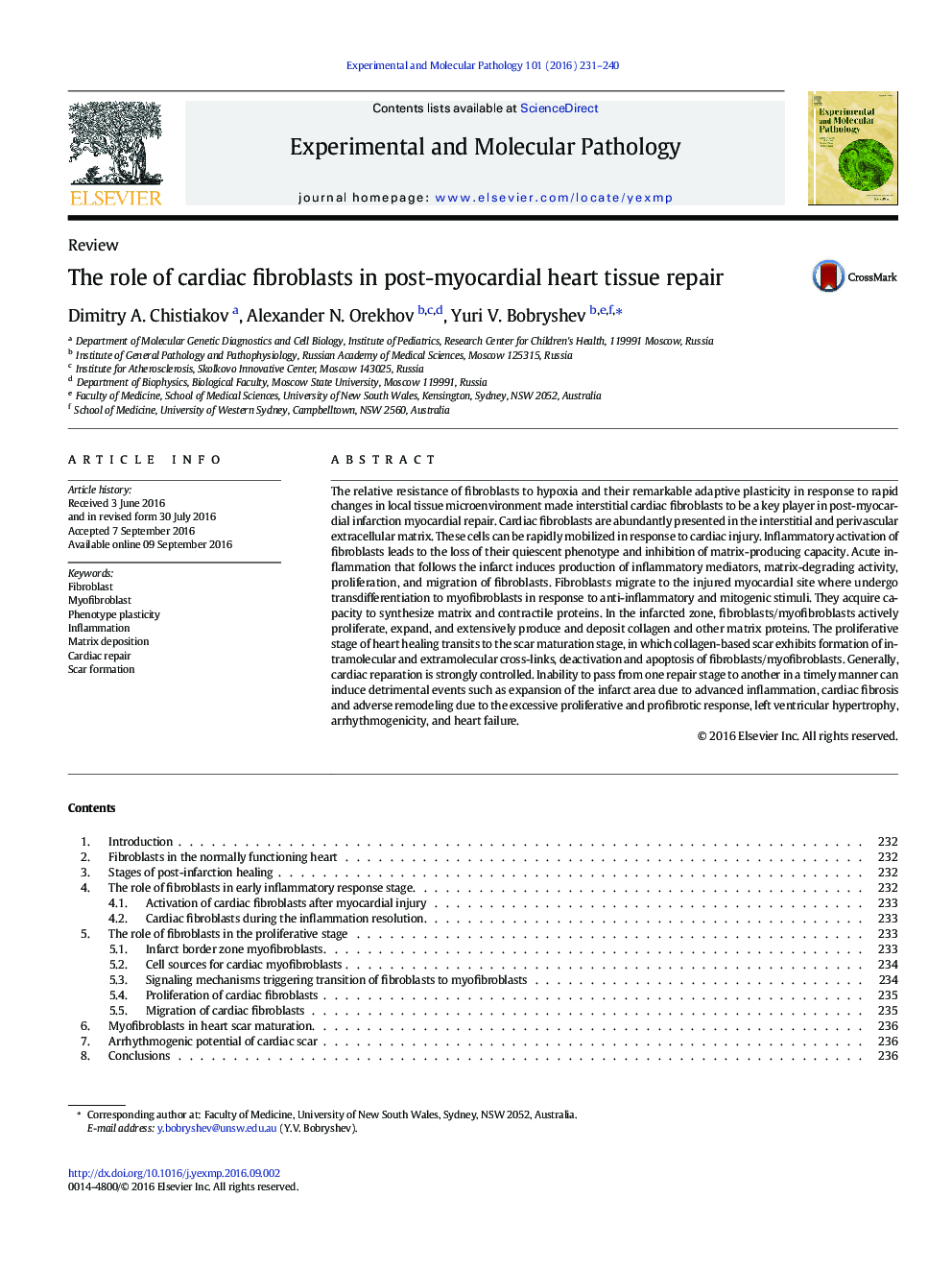| کد مقاله | کد نشریه | سال انتشار | مقاله انگلیسی | نسخه تمام متن |
|---|---|---|---|---|
| 2774822 | 1404310 | 2016 | 10 صفحه PDF | دانلود رایگان |
عنوان انگلیسی مقاله ISI
The role of cardiac fibroblasts in post-myocardial heart tissue repair
ترجمه فارسی عنوان
نقش فیبروبلاست های قلبی در بهبود بافت قلب پس از قلب
دانلود مقاله + سفارش ترجمه
دانلود مقاله ISI انگلیسی
رایگان برای ایرانیان
کلمات کلیدی
فیبروبلاست، میوفیبروبلاست، ظرافت پنیوتیپ، التهاب رسوب ماتریکس، تعمیر قلب، تشکیل اسکار،
موضوعات مرتبط
علوم زیستی و بیوفناوری
بیوشیمی، ژنتیک و زیست شناسی مولکولی
بیوشیمی بالینی
چکیده انگلیسی
The relative resistance of fibroblasts to hypoxia and their remarkable adaptive plasticity in response to rapid changes in local tissue microenvironment made interstitial cardiac fibroblasts to be a key player in post-myocardial infarction myocardial repair. Cardiac fibroblasts are abundantly presented in the interstitial and perivascular extracellular matrix. These cells can be rapidly mobilized in response to cardiac injury. Inflammatory activation of fibroblasts leads to the loss of their quiescent phenotype and inhibition of matrix-producing capacity. Acute inflammation that follows the infarct induces production of inflammatory mediators, matrix-degrading activity, proliferation, and migration of fibroblasts. Fibroblasts migrate to the injured myocardial site where undergo transdifferentiation to myofibroblasts in response to anti-inflammatory and mitogenic stimuli. They acquire capacity to synthesize matrix and contractile proteins. In the infarcted zone, fibroblasts/myofibroblasts actively proliferate, expand, and extensively produce and deposit collagen and other matrix proteins. The proliferative stage of heart healing transits to the scar maturation stage, in which collagen-based scar exhibits formation of intramolecular and extramolecular cross-links, deactivation and apoptosis of fibroblasts/myofibroblasts. Generally, cardiac reparation is strongly controlled. Inability to pass from one repair stage to another in a timely manner can induce detrimental events such as expansion of the infarct area due to advanced inflammation, cardiac fibrosis and adverse remodeling due to the excessive proliferative and profibrotic response, left ventricular hypertrophy, arrhythmogenicity, and heart failure.
ناشر
Database: Elsevier - ScienceDirect (ساینس دایرکت)
Journal: Experimental and Molecular Pathology - Volume 101, Issue 2, October 2016, Pages 231-240
Journal: Experimental and Molecular Pathology - Volume 101, Issue 2, October 2016, Pages 231-240
نویسندگان
Dimitry A. Chistiakov, Alexander N. Orekhov, Yuri V. Bobryshev,
